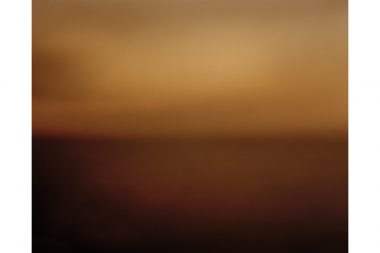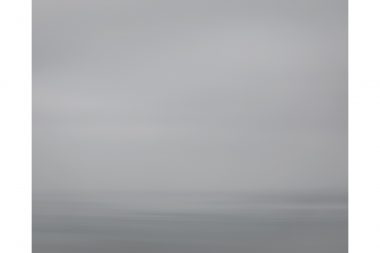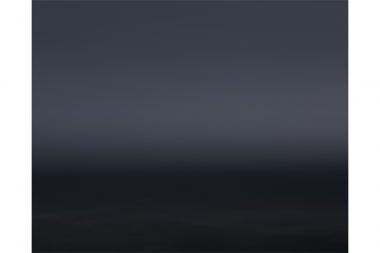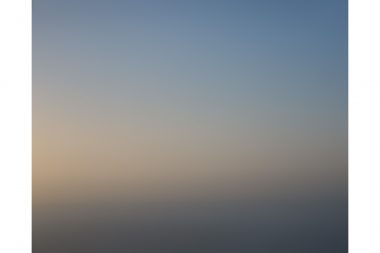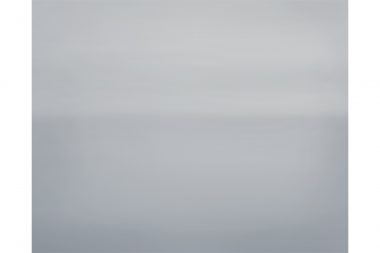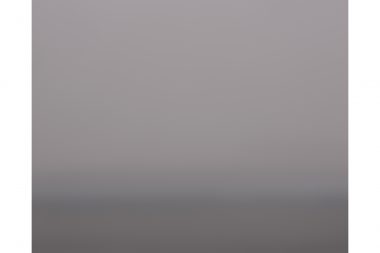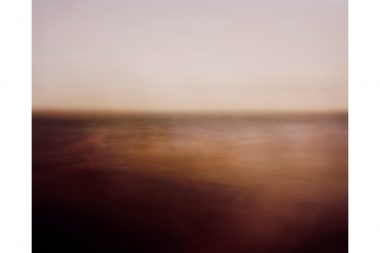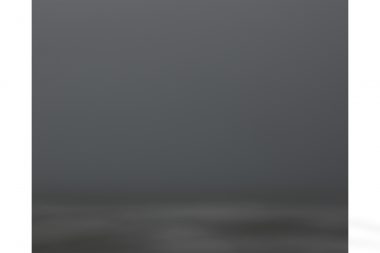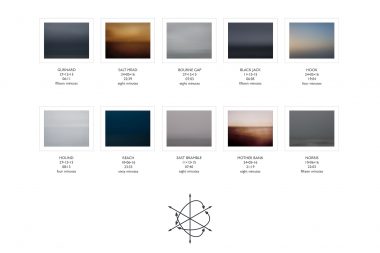Six Degrees of Freedom is a response to looking at the late seascapes of the painter J.M.W. Turner
and to the challenges photography faces in expressively rendering the sea.
The project involved attaching a pinhole camera to navigation buoys in the Solent, and making exposures ranging from four minutes to an hour. The channel flows around Cowes, the town of my upbringing, and an area in which Turner produced several seascapes. It is famous for the strength of its tides and currents. This process creates an interplay between control and chance. The aspects of control include the selection of the buoy, the choice of the time of day to make the images and the duration of the exposures. There is chance, however, in is the unpredictable movement of the buoy, as dictated by the movement of the sea. The resulting photographs are renderings of the sea and sky, directly produced by the six directions of movement that affect a buoyant object.
The resultant photographs echo the diffuse and indistinct visual effects found in the paintings of such artists as Turner, Caspar David Friederich and Mark Rothko. This is part of the language of the sublime referred to by Immanuel Kant in his Critique of Judgement of 1790. He distinguished between the differences of the Beautiful and the Sublime, noting that beauty “is connected with the form of the object, having boundaries”, while the sublime “is to be found in a formless object, insofar as limitlessness is represented in it”.
The project received a Photoworks Awards in 2016. Archival-quality limited edition photographs from the project can be purchased here.
An essay about the project was written by the theorist and artist Duncan Wooldridge to accompany the exhibition of the work:
Photography has long functioned as an image of the frozen moment. For many, the photograph is a metaphysical slice of time, measured by the fractions of a second needed to make an exposure with the most sensitive chemicals and technologies. And yet the perspective of just such an understanding, of this momentary event – sometimes captured by the camera but also sometimes missed – seems to point not to an essence of photography, but to the ongoing necessity of a faster and more responsive image (which is to say it subscribes to the logics of the program of photography described by Vilém Flusser, which tells us that the technological progress of cameras and technologies feeds a cycle of ever greater consumption, until the universe of images is characterised by the rapid redundancy of each and every photograph). This framing of photography understands it not only as a technical pursuit, but also as an object that removes pictures from the world, excising them from time to become largely autonomous. We are used to thinking that, once a photograph is taken, it is extracted from the moment in which it was made, and left to sit in perpetuity as a historical record. Rarely do we think of our photographs as contingent upon, and contingent with, the world in which they are made and continue to exist.
Floating on the water’s surface, a buoy is both static and fluid, and resists the dualistic opposition of still and moving: receptive to the rhythm of water, it moves continuously; weighted or anchored, it also transmits a continuity. We might see in the buoy a strange analogon for the photographic image, which the Art Historian George Baker, in his essay ‘Photography’s Expanded Field’, has characterized as ‘not still and not moving’. The buoy hovers between action and inaction, passivity and an ability to produce conditions of being. And just as we might forget that the buoy also functions and is an actant altering our behaviour– it does not always passively sit there, but changes us – so the photograph may also act and exist in the world.
When Richard Boll places a pinhole camera onto buoys of the Solent, we get an image of the expanded time of the photograph: just as Hiroshi Sugimoto’s seascapes record duration, his photographs are ‘time images’, meditative and producing an image which resets the eye from looking for detail, into experiencing something more fundamental about vision. We experience their temporality in looking at them. The eye acclimatises to not settling upon the studium that we see in many photographs. But more than this, the motion of the buoy, which is registered in the subtly destabilized horizon, animates for us the making of the image, which places the camera in the same conditions as the buoy itself. Here the camera reveals a way of looking that we might share: what the Japanese call Mizu no Kokoro: to have a mind like water, not searching the image for its facts and its concrete information, but for what it can tell us of experience, of seeing and acting in the world.
- Six Degrees of Freedom
- Six Degrees of Freedom
- Six Degrees of Freedom
- Six Degrees of Freedom
- Six Degrees of Freedom
- Six Degrees of Freedom
- Six Degrees of Freedom
- Six Degrees of Freedom
- Six Degrees of Freedom
- Six Degrees of Freedom
- Six Degrees of Freedom


